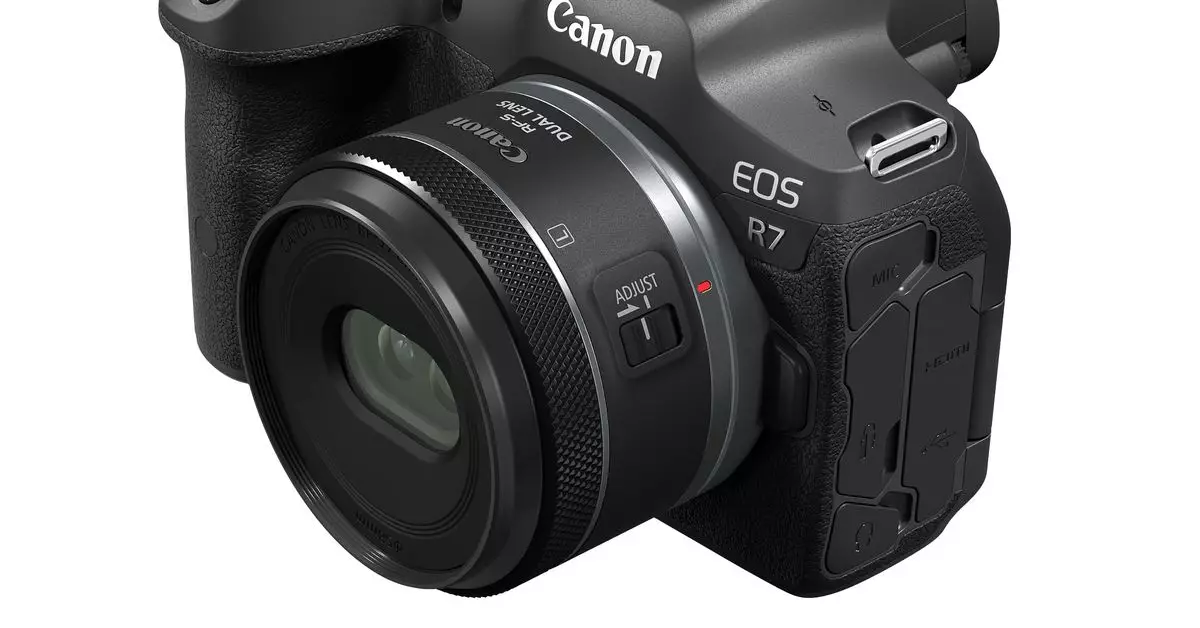In a technology landscape increasingly dominated by immersive experiences, Canon has made a strategic advancement with the introduction of its RF-S7.8mm F4 STM Dual lens. This announcement is a beacon of accessibility for content creators aiming to delve into the realms of 3D and virtual reality (VR). By combining affordability with advanced technology, Canon is positioning itself as a key player in the burgeoning field of stereoscopic video production.
The RF-S7.8mm F4 STM Dual lens, launched recently, is notable for its price point of $449.99, slated for release in November 2024. This price is significantly lower than Canon’s existing options, which can reach into the thousands. For instance, the dual-fisheye RF5.2mm F2.8 L lens retails at $1,999, while the RF-S3.9mm F3.5 STM Dual costs $1,099. Interestingly, the new lens’s pricing strategy reflects Canon’s intention to democratize access to high-quality 3D content creation, appealing to a wider range of emerging creators who desire professional-grade equipment without the professional price tag.
Moreover, when paired with the Canon EOS R7, which begins at $1,299, the total expenditure for a complete 3D setup comes in slightly over $1,700. While still a considerable investment, this setup costs much less than Canon’s high-end solutions, thus inviting budget-conscious filmmakers and photographers into the 3D landscape.
What distinguishes the RF-S7.8mm from its pricier predecessors is its unique optical design that offers a stereoscopic effect within a more compact and user-friendly lens. The lens features an aperture range of f/4.0 to f/16, ensuring versatility in various lighting situations. It also supports autofocus, which is crucial for creators focusing on dynamic environments. Notably, the lens incorporates a control wheel and button system that enables separate manual adjustments for the left and right camera sides, providing detailed control over the 3D depth effects.
However, with its affordability comes limitations. The lens has a narrower field of view at only 63 degrees compared to the expansive 180 degrees available in Canon’s more expensive models. This restricts the 3D effect primarily to subjects at a close range—between 6 to 20 inches—which may challenge creators looking to capture wider landscapes or more comprehensive scenes.
An important consideration for prospective users of the RF-S7.8mm lens is the processing required to view the captured images and videos. The content must be processed using Canon’s EOS VR software or an Adobe Premiere Pro plugin, both of which necessitate a subscription. This model represents an evolving trend in creative technology where hardware and software are increasingly intertwined; however, it may also pose a barrier for some users who may be deterred by ongoing costs.
Moreover, while the processing tools available provide the necessary capabilities to generate 180-degree 3D and VR content, creators must remain adept at navigating these software environments to fully exploit the lens’s potential.
Canon’s RF-S7.8mm F4 STM Dual lens marks a significant stride in bringing 3D videography to a broader audience. By addressing both affordability and usability, Canon effectively lowers the entry barrier for creators eager to explore the realms of stereoscopic imagery. While limitations in field of view and processing requirements are present, the combined offering of this lens and the EOS R7 camera provides a well-rounded starting point for creators embarking on new storytelling ventures.
As the demand for immersive content continues to grow, Canon’s latest offering not only reinforces its legacy in the photographic and videographic landscape but also invites a new generation of content creators to reimagine their projects through a 3D lens, quite literally. With this advancement, Canon appears poised to play a central role in the future of virtual and augmented reality content creation.

